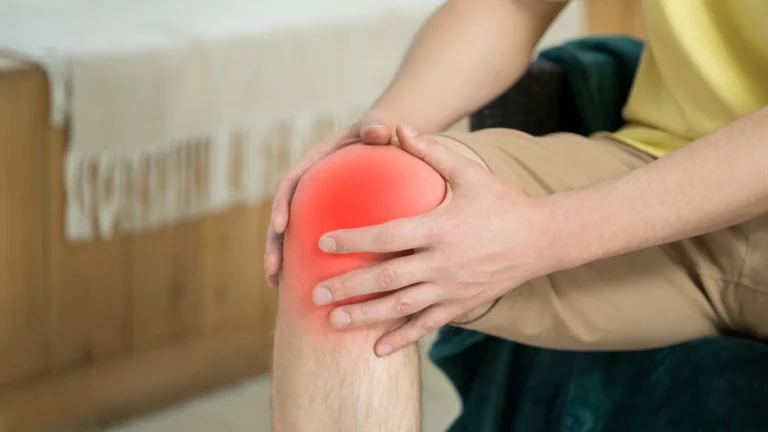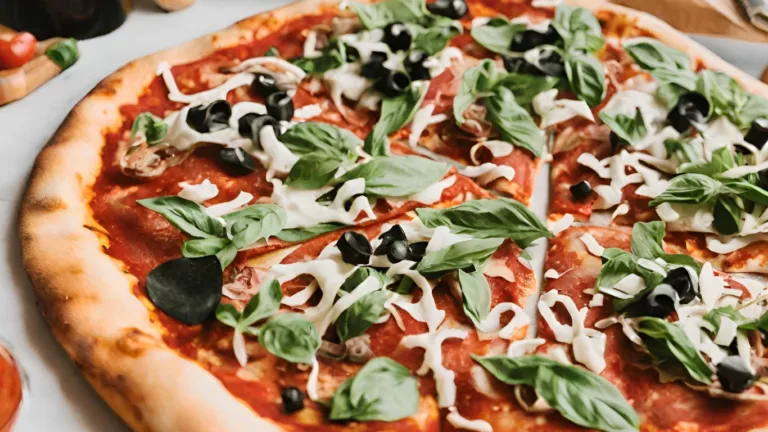Best Diet Plans for High Blood Pressure Patients: Powerful Strategies for Health
If you’re one of the millions of people dealing with high blood pressure, you’re likely familiar with the overwhelming advice that gets thrown your way—most of it revolving around making significant lifestyle changes. One of the most impactful changes you can make is adjusting your diet. In fact, one of the most effective ways to manage and even reduce hypertension is by following a carefully crafted diet plan for high blood pressure patients. But where do you even begin? If you’re feeling confused or unsure, trust me—you’re not alone. I’ve spent years working with patients who share similar concerns. So, let’s break it down and make things clearer.
Understanding Hypertension and the Role of Diet

High blood pressure, also known as hypertension, is a silent condition that affects millions of people worldwide. It occurs when the force of your blood against the walls of your arteries is consistently too high. If left uncontrolled, hypertension can lead to serious health problems, such as heart disease, stroke, and kidney damage. Fortunately, high blood pressure is manageable, and in many cases, can even be reversed with proper care and lifestyle changes.
Diet plays a huge role in controlling hypertension. A healthy eating plan designed specifically for high blood pressure patients can help lower blood pressure levels, improve overall health, and even reduce the need for medications in some cases. I’ve worked with countless patients over the years, and I can confidently say that one of the most powerful tools at your disposal is a diet rich in heart-healthy foods.
The DASH Diet: The Gold Standard for Hypertension

What is the DASH Diet?
The DASH diet, or Dietary Approaches to Stop Hypertension, is one of the most well-researched and widely recommended dietary patterns for people with high blood pressure. It focuses on reducing sodium intake while increasing the intake of potassium, magnesium, and calcium-rich foods. Essentially, the DASH diet is designed to promote heart health and lower blood pressure levels by encouraging a balanced, nutrient-dense eating plan.
Key Components of the DASH Diet
- Fruits and Vegetables: Aim for at least 4-5 servings of fruits and vegetables each day. These foods are naturally high in potassium, which helps balance the negative effects of sodium.
- Whole Grains: Incorporate at least 6-8 servings of whole grains, such as brown rice, quinoa, and whole wheat bread, into your meals. These foods are packed with fiber, which supports overall cardiovascular health.
- Lean Proteins: Include 2 or fewer servings of lean proteins such as chicken, turkey, and plant-based sources like tofu or legumes. These provide essential nutrients without the saturated fats that can contribute to high blood pressure.
- Dairy: Choose low-fat or fat-free dairy products, such as milk, yogurt, and cheese. These are excellent sources of calcium, which helps regulate blood pressure.
- Nuts, Seeds, and Legumes: Add 4-5 servings of nuts, seeds, and legumes per week. They’re high in healthy fats, fiber, and minerals that can help improve blood vessel function and reduce inflammation.
- Sodium Limits: The DASH diet recommends limiting sodium intake to no more than 2,300 mg per day, ideally reducing it to 1,500 mg per day for even greater benefits.
Why the DASH Diet Works
What makes the DASH diet so effective in managing high blood pressure is its focus on nutrient-dense foods that are naturally low in sodium and high in blood-pressure-lowering nutrients like potassium, magnesium, and calcium. These nutrients help relax blood vessels, improve blood flow, and reduce overall blood pressure. By sticking to this diet, many patients I’ve worked with have seen remarkable improvements in their blood pressure levels within just a few weeks.
The Mediterranean Diet: Another Great Option for Hypertension

If the DASH diet isn’t your style, don’t worry! There are other heart-healthy eating plans out there that can also help with high blood pressure. One of my personal favorites is the Mediterranean diet. This eating pattern has been linked to numerous health benefits, including reduced risk of heart disease, stroke, and, yes, even hypertension. Plus, it’s delicious!
What is the Mediterranean Diet?
The Mediterranean diet is based on the traditional eating habits of people living in countries bordering the Mediterranean Sea. It emphasizes fresh fruits and vegetables, whole grains, legumes, nuts, seeds, and healthy fats, particularly olive oil. Unlike many other diets, the Mediterranean diet allows for moderate consumption of wine, particularly red wine, which is thought to offer additional cardiovascular benefits when enjoyed in moderation.
Key Components of the Mediterranean Diet
- Healthy Fats: Olive oil is the primary source of fat in this diet. It’s rich in monounsaturated fats, which are great for heart health.
- Fresh Produce: A variety of fruits and vegetables is encouraged daily to provide a range of vitamins, minerals, and antioxidants.
- Fish and Seafood: Eating fish—particularly fatty fish like salmon and mackerel—several times a week helps provide heart-healthy omega-3 fatty acids.
- Whole Grains: Like the DASH diet, the Mediterranean diet also emphasizes whole grains such as brown rice, barley, and whole wheat pasta.
- Legumes and Nuts: Beans, lentils, and nuts are common protein sources in the Mediterranean diet, and they help to lower blood pressure and reduce cholesterol levels.
As we continue to explore the best diet plans for high blood pressure patients, it’s important to acknowledge that no single plan will work for everyone. Each person’s body is unique, and there are a variety of factors that influence how your body responds to different foods. In my experience, though, small and consistent changes are often the most effective—and when it comes to hypertension, every little step counts. So, let’s dive into more dietary options and tips that can help you manage your blood pressure more effectively.
Low-Sodium Diet: Why Reducing Sodium is Key

If there’s one piece of advice I emphasize with every patient, it’s this: cutting back on sodium is crucial for managing hypertension. Sodium is the villain when it comes to high blood pressure. It causes your body to retain fluid, which in turn increases the volume of blood your heart has to pump, thus raising your blood pressure. Cutting down on sodium can be one of the simplest and most impactful changes you can make, and it’s not as difficult as it may seem.
How Much Sodium Should You Aim for?
The American Heart Association recommends that people with high blood pressure limit their sodium intake to no more than 1,500 mg per day. To put that into perspective, a single teaspoon of salt contains about 2,300 mg of sodium, so it’s easy to see how quickly sodium can add up in your diet. If you’re currently consuming a lot of processed foods, reducing your sodium intake may require a complete overhaul of your eating habits, but trust me—it’s worth it.
Practical Tips for Reducing Sodium Intake
- Cook at Home: One of the easiest ways to control the amount of sodium you consume is by preparing your meals at home. This way, you can use fresh ingredients and control the seasonings.
- Read Nutrition Labels: Many packaged foods contain hidden sodium. Be sure to check labels for sodium content and look for low-sodium options when possible.
- Flavor with Herbs: Instead of using salt, experiment with herbs and spices to flavor your food. Garlic, onion powder, lemon, and fresh herbs like basil or rosemary can add loads of flavor without the sodium.
- Choose Fresh or Frozen Vegetables: Canned vegetables often contain added sodium, so opt for fresh or frozen varieties instead.
Foods to Include in Your Hypertension Diet

When you’re creating a diet plan to manage high blood pressure, it’s not just about what you should avoid; it’s also about what you should embrace. Certain foods have powerful nutrients that can actively help lower your blood pressure, and including more of them in your diet is a great way to take control of your health. Let’s take a closer look at some of the best foods for hypertension patients.
Potassium-Rich Foods
Potassium is your ally when it comes to controlling high blood pressure. It helps balance out the effects of sodium, reducing its negative impact on your blood pressure. Incorporating potassium-rich foods into your diet can help lower blood pressure naturally. Some great sources of potassium include:
- Bananas: A classic potassium powerhouse, bananas are an easy and convenient snack to add to your daily routine.
- Sweet Potatoes: These are another great source of potassium and provide fiber, which is great for your heart health.
- Spinach: Dark leafy greens like spinach are rich in potassium and other heart-healthy nutrients like magnesium.
- Beans: Beans are not only high in potassium, but they’re also a great plant-based protein source, making them ideal for your hypertension-friendly diet.
Magnesium-Rich Foods
Magnesium is another mineral that plays a role in regulating blood pressure. It helps to relax your blood vessels, making it easier for your heart to pump blood. Some excellent magnesium-rich foods include:
- Almonds: A handful of almonds makes a great snack, and they’re loaded with magnesium, healthy fats, and protein.
- Avocados: Avocados are not only rich in magnesium but also heart-healthy fats that can help keep your blood pressure in check.
- Dark Chocolate: Yes, you read that right! Dark chocolate (in moderation) is a great source of magnesium and has been shown to have blood pressure-lowering benefits.
Omega-3 Fatty Acids
Omega-3 fatty acids, found in fatty fish, nuts, and seeds, are well-known for their anti-inflammatory properties. They also help improve heart health by reducing blood pressure and cholesterol levels. Adding more omega-3s to your diet is an excellent way to protect your heart. Here are some omega-3-rich foods to consider:
- Salmon: Fatty fish like salmon is rich in omega-3s and is one of the best foods you can eat for your heart.
- Chia Seeds: Chia seeds are a fantastic plant-based source of omega-3s, and you can sprinkle them on yogurt, salads, or blend them into smoothies.
- Flaxseeds: Like chia seeds, flaxseeds are high in omega-3s and also provide fiber, which supports overall heart health.
Managing Your Hypertension Diet: Tips for Success
Creating and sticking to a hypertension-friendly diet plan may seem overwhelming at first, but trust me, it becomes second nature once you get the hang of it. I’ve seen so many of my patients improve their blood pressure through diet alone, and it’s truly empowering. Here are some tips to make sure you stay on track:
Make Gradual Changes
Don’t feel like you need to overhaul your entire diet in one go. Start with small changes—maybe cutting back on processed foods or adding one potassium-rich food to your meals each day. Gradual changes are easier to maintain and can help you create lasting, positive habits.
Plan Your Meals
Meal planning can save you time, money, and stress. By planning ahead, you ensure that you always have healthy options on hand and can avoid last-minute temptations. Take some time each week to plan out your meals and snacks, and make a grocery list based on the ingredients you’ll need.
Stay Hydrated
Drinking plenty of water throughout the day is essential for overall health. Staying hydrated helps maintain healthy blood volume and circulation, which are crucial for controlling blood pressure. Aim for at least 8 cups of water per day, and consider limiting sugary drinks and caffeine, as they can contribute to high blood pressure.
By now, you’ve learned about several diet plans for high blood pressure patients and how making small yet consistent dietary changes can have a powerful impact on your health. But let’s face it—seeing real-life examples of people who have successfully managed their blood pressure can be incredibly motivating. In this final section, I’m going to share some case studies and real-life experiences, plus give you a few more key takeaways, FAQs, and even some bonus tips to help you on your journey.
Case Studies & Real-Life Examples

One of the best ways to understand how diet impacts blood pressure management is by looking at real-world examples. Over the years, I’ve had the privilege of working with numerous patients who were able to significantly improve their blood pressure through diet alone, often in combination with other lifestyle changes. Here are a few stories that highlight how diet plays a key role in hypertension management.
Case Study 1: Sarah’s Journey with the DASH Diet
Sarah came to me two years ago with high blood pressure readings consistently in the 150/90 range. Her doctor had prescribed medication, but she wasn’t feeling comfortable with relying on it long-term. After discussing her options, we decided to give the DASH diet a try. We started by cutting down on processed foods and gradually incorporating more fruits, vegetables, whole grains, and lean proteins into her meals.
After just six weeks, Sarah’s blood pressure dropped by 10 points, and within six months, her readings were consistently in the 120/80 range. She felt more energetic, and her cholesterol levels improved as well. Sarah’s success wasn’t just due to the DASH diet alone—it was the combination of making healthier food choices, reducing stress, and increasing physical activity. But that initial dietary shift was the foundation of her transformation.
Case Study 2: John’s Experience with the Mediterranean Diet
John, a 54-year-old man, came to me with a history of high blood pressure and family members with heart disease. His lifestyle was pretty active, but his diet consisted largely of processed foods, red meat, and sugary drinks. He was already aware that his diet was part of the problem, but he wasn’t sure where to start. I introduced him to the Mediterranean diet as an alternative to the traditional American diet, focusing on healthy fats, fish, and plenty of vegetables.
John embraced the change and, within three months, his blood pressure had decreased significantly. His total cholesterol and triglyceride levels also dropped, and he reported feeling “better than he had in years.” He found the Mediterranean diet to be easy to follow, and most importantly, he loved the flavors. For John, making a shift toward heart-healthy fats, whole foods, and fewer processed snacks made a world of difference.
Key Takeaways: What You Need to Remember
When it comes to managing high blood pressure with diet, the key takeaway is that consistency and small changes matter. Here are a few crucial points to remember:
- Focus on nutrient-dense foods: Prioritize fruits, vegetables, whole grains, lean proteins, and healthy fats. These foods provide the necessary nutrients that support heart health and help lower blood pressure.
- Limit sodium: Too much salt can raise your blood pressure. Aim to keep your sodium intake below 1,500 mg per day, and avoid processed foods that are high in hidden sodium.
- Don’t overlook hydration: Water plays a key role in blood pressure regulation, so make sure to stay hydrated throughout the day.
- Consider structured diets: Both the DASH and Mediterranean diets are scientifically supported and can help lower blood pressure over time.
- Patience is key: While changes can be seen fairly quickly, long-term improvements require consistency and time. Stick to your new diet plan and lifestyle changes for the best results.
FAQs
1. Can I stop taking my blood pressure medication once I follow a healthy diet?
It’s essential to speak with your healthcare provider before making any changes to your medication regimen. While a healthy diet can significantly improve your blood pressure, it’s important to follow your doctor’s advice. In some cases, diet changes may allow you to reduce or eliminate medication, but this should always be done under professional supervision.
2. Are there any foods I should completely avoid?
Yes, there are several foods that are best avoided if you have high blood pressure. These include processed foods, salty snacks, sugary drinks, fried foods, and excessive alcohol. Cutting back on these foods can help you maintain a healthy blood pressure level and improve overall health.
3. How long does it take for diet changes to lower blood pressure?
While individual results vary, most people see improvements within a few weeks to a few months after adopting a healthy eating plan. The more consistent you are with your diet, the better the results. It’s important to note that while diet is crucial, other lifestyle factors like exercise, stress management, and sleep also play a role in blood pressure management.
Bonus: Additional Resources or DIY Tips
If you’re looking to deepen your knowledge or find helpful resources on hypertension management, here are some great tools:
- The DASH Diet Guide: A comprehensive, free resource that breaks down everything you need to know about the DASH diet.
- American Heart Association: A trusted organization providing information, resources, and tips for managing blood pressure and heart health.
- Cooking for Health: Consider experimenting with heart-healthy recipes. Many websites and cookbooks specialize in hypertension-friendly meals.
Appendix: Table, References, Disclaimer, and Call to Action
References: For more detailed research on hypertension and diet, visit reputable sources like the American Heart Association or the Centers for Disease Control and Prevention (CDC).
Disclaimer: The information provided in this article is for educational purposes only. Always consult with your healthcare provider before making any significant changes to your diet or medication regimen.
If you’re ready to take control of your health and lower your blood pressure, now is the perfect time to start. Choose one small change from this article and incorporate it into your routine. Remember, managing high blood pressure is a journey, but with the right tools and a positive mindset, you can improve your heart health and feel better every day.

Dr. Gwenna Aazee is a board-certified Internal Medicine Physician with a special focus on hypertension management, chronic disease prevention, and patient education. With years of experience in both clinical practice and medical writing, she’s passionate about turning evidence-based medicine into accessible, actionable advice. Through her work at Healthusias.com, Dr. Aazee empowers readers to take charge of their health with confidence and clarity. Off the clock, she enjoys deep dives into nutrition research, long walks with her rescue pup, and simplifying medical jargon one article at a time.






